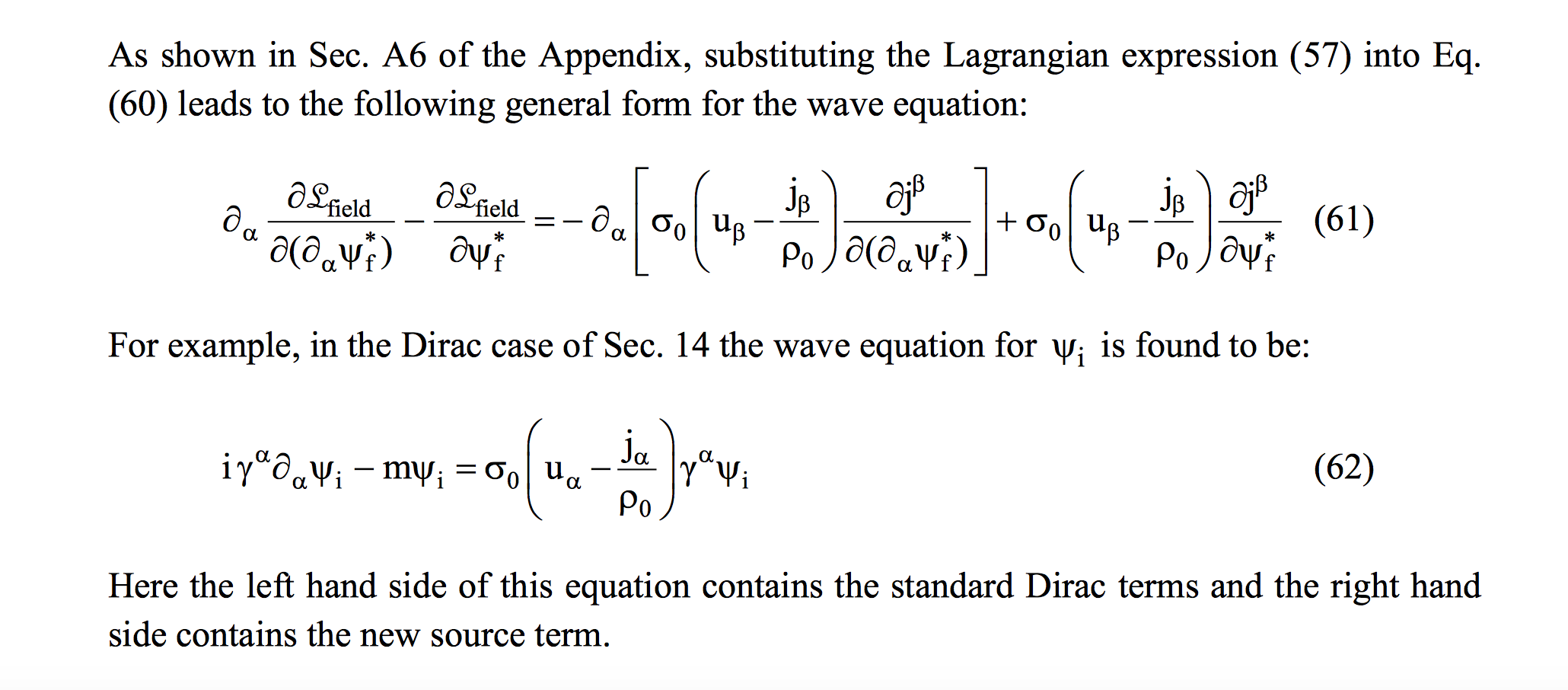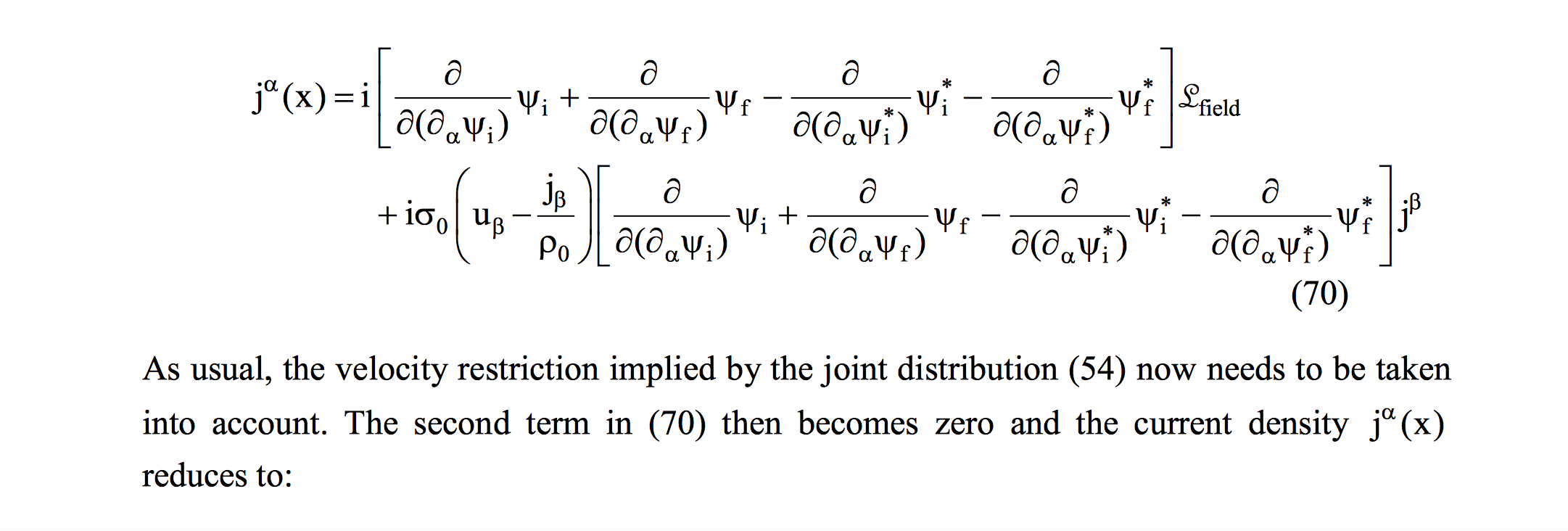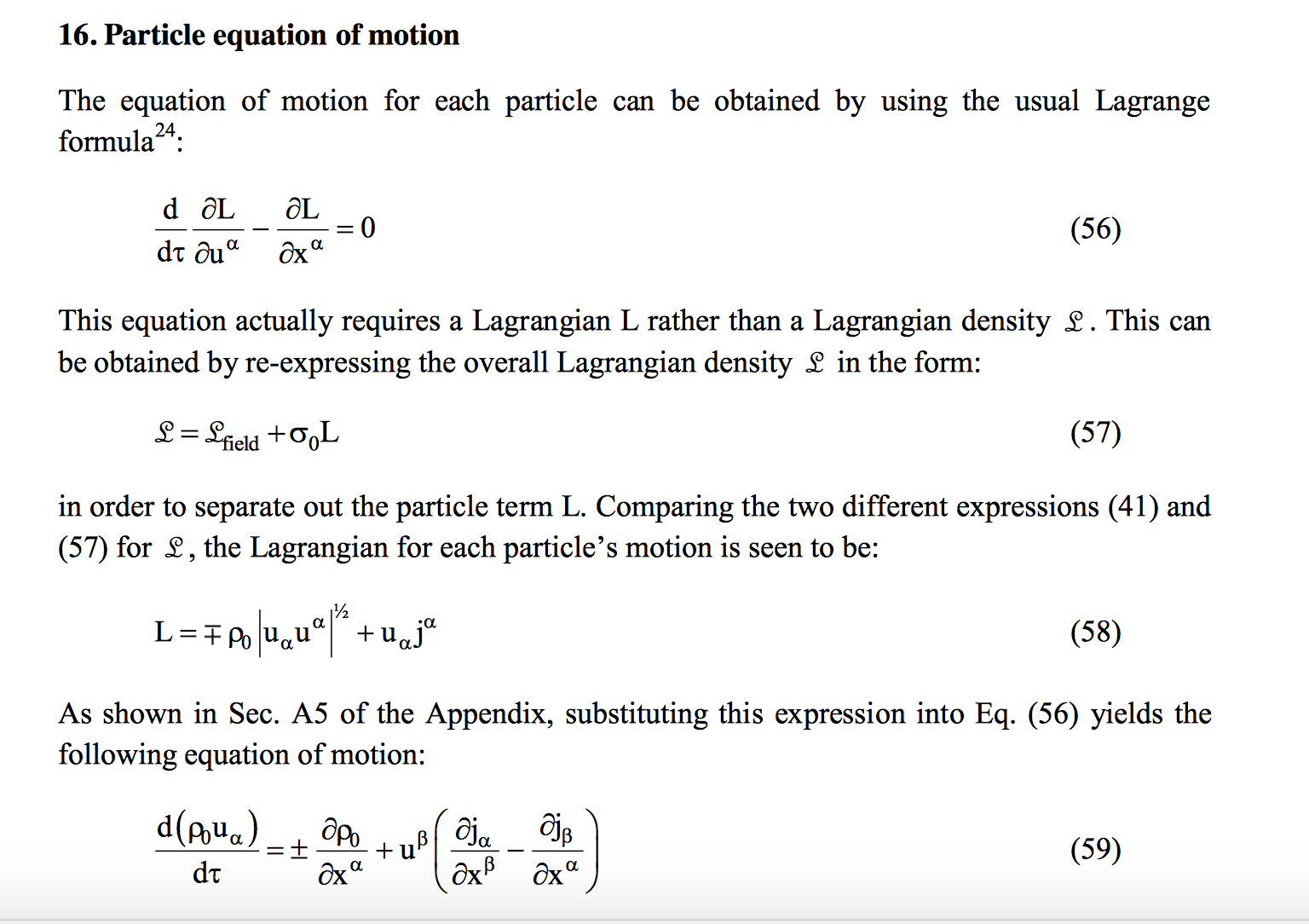Paul Werbos
Klee Irwin
Paul, if you’d be interested (at our expense) in doing a talk here at Quantum Gravity Research, we’d be honored to host you. If so, please email me at Kl...@QuantumGravityResearch.org.
From: online_sa...@googlegroups.com [mailto:online_sa...@googlegroups.com]
On Behalf Of Paul Werbos
Sent: Saturday, June 10, 2017 4:38 AM
To: online_sa...@googlegroups.com
Subject: Re: Jack Sarfatti, RE: [Sadhu Sanga] Sutherland's latest paper on entanglement as local retrocausality
On Fri, Jun 9, 2017 at 8:19 PM, Vasavada, Kashyap V <vasa...@iupui.edu> wrote:
Dear Klee,
Thanks for your e-mail. I promise to read some of the papers on retro causality before expressing my opinion again! But from what I know, even after 90 years of debate, there is no consensus on the interpretation. Most professors teach Copenhagen because it is the simplest and most physicists do not really care for any interpretation.
In truth, it is a matter of different theories which make different predictions. See my open access paper in the Internatoinal Journal of Theoretical Physics, the journal where Feynman published his early papers:
Many physicists have been reluctant to face up to the difference in theories, because each one of them is very complex, and most people are trained on only one or two of them.
But in fact, decisive experiments ARE POSSIBLE, at a cost far, far less than most of the experiments now being pursued in the high energy.
(These would be cheaper, because they can be done in the world of quantum optics, where double and triple entanglement of photons is enough.)
I have documented one of the two possible experiments, and the two conflicting predictions of Copenhagen versus time-symmetric physics, at:
================
Werbos, Paul J., and Ludmilla Dolmatova. "Analog quantum computing (AQC) and the need for time-symmetric physics."Quantum Information Processing(2015): 1-15. To see the full paper, click here. For more information on the amazing new experimental results of 2015, and possibilities for confirmation, click here.
==================
Something is wrong with "science" when "scientists" prefer to discuss hermeneutics and opinion but do not energetically work to do the critical experiments which could tell us what the true story is. But yes, triple entanglement does require skill, and so far as I know it has only been done in China, in Austria (GHz) and in a US lab which has lost the capability due in part to fluctuations in government funding.
(Primary credit: congressman Lamar Smith, friend of Comey and of Cruz network.) I have recently figured out a way to test the "retrocausal" hypothesis with only double entanglement, and a few folks say they have the apparatus and may get around to it soon...
========
By the way, I do get slightly annoyed when Jack keeps telling me he will enlighten my obvious ignorance about the newly discovered ideas of "retrocausality" and their implications for local realism. The classic seminal paper on triple entanglement (by GHz) appeared in a book edited by Kafatos on Bell's Theorem, based on discussions from 1988-1990. My own paper in that same book was as brutally clear about the link between time-symmetric physics and local realism as one could possibly be, and cited my paper from the 70's in Nuovo Cimento which was the first to make that point. However, translating theory into design of a decisive experiment, replicable in dozens of physics labs, is not a trivial translation. It took time, but for those who have not yet died of old age or become ossified and jaded, the path to a new world has opened up. Some things take time, and demand that we remember what is important. Of course, that also applies to yoga itself.
--
----------------------------
Fifth International Conference
Science and Scientist - 2017
August 18—19, 2017
Nepal Pragya Pratisthan, Kathmandu, Nepal
http://scsiscs.org/conference/scienceandscientist/2017
Send a Donation to Support Our Services:
http://scienceandscientist.org/donate
(All Indian residents are eligible for tax benefits for their contributions under section 80G of the Income Tax Act)
Report Archives: http://bviscs.org/reports
Why Biology is Beyond Physical Sciences?:
http://dx.doi.org/10.5923/j.als.20160601.03
Life and consciousness – The Vedāntic view:
http://dx.doi.org/10.1080/19420889.2015.1085138
Harmonizer: http://scienceandscientist.org/harmonizer
Darwin Under Siege: http://scienceandscientist.org/Darwin
Princeton Bhakti Vedanta Institute: http://bviscs.org
Sri Chaitanya Saraswat Institute: http://scsiscs.org
Sadhu-Sanga Blog: http://mahaprabhu.net/satsanga
Contact Us: http://scsiscs.org/contact
---
You received this message because you are subscribed to the Google Groups "Sadhu-Sanga Under the holy association of Spd. B.M. Puri Maharaja, Ph.D." group.
To unsubscribe from this group and stop receiving emails from it, send an email to
Online_Sadhu_Sa...@googlegroups.com.
To post to this group, send email to
Online_Sa...@googlegroups.com.
Visit this group at
https://groups.google.com/group/Online_Sadhu_Sanga.
To view this discussion on the web visit
https://groups.google.com/d/msgid/Online_Sadhu_Sanga/CACLqmgdgQ-hKJjNOzQY4Lq75QAKO9xgBWwrD%3D3FRf3TUjXVuZw%40mail.gmail.com.
For more options, visit https://groups.google.com/d/optout.
JACK SARFATTI
By the way, I do get slightly annoyed when Jack keeps telling me he will enlighten my obvious ignorance about the newly discovered ideas of "retrocausality" and their implications for local realism. The classic seminal paper on triple entanglement (by GHz) appeared in a book edited by Kafatos on Bell's Theorem, based on discussions from 1988-1990. My own paper in that same book was as brutally clear about the link between time-symmetric physics and local realism as one could possibly be, and cited my paper from the 70's in Nuovo Cimento which was the first to make that point. However, translating theory into design of a decisive experiment, replicable in dozens of physics labs, is not a trivial translation. It took time, but for those who have not yet died of old age or become ossified and jaded, the path to a new world has opened up. Some things take time, and demand that we remember what is important. Of course, that also applies to yoga itself.
- 1. arXiv:1706.02290 [pdf]
- How Retrocausality HelpsComments: AIP Conference Proceedings 2016Subjects: Quantum Physics (quant-ph)
- 2. arXiv:1509.07380 [pdf]
- Interpretation of the Klein-Gordon Probability DensityComments: 6 pagesSubjects: Quantum Physics (quant-ph)
- 3. arXiv:1509.02442 [pdf]
- Lagrangian Description for Particle Interpretations of Quantum Mechanics -- Entangled Many-Particle CaseComments: 34 pagesSubjects: Quantum Physics (quant-ph)
- 4. arXiv:1509.00001 [pdf]
- Energy-momentum tensor for a field and particle in interactionComments: 9 pagesSubjects: Classical Physics (physics.class-ph)
- 5. arXiv:1502.02058 [pdf]
- Naive Quantum GravitySubjects: General Relativity and Quantum Cosmology (gr-qc); Quantum Physics (quant-ph)
- 6. arXiv:1411.3762 [pdf]
- Lagrangian Formulation for Particle Interpretations of Quantum Mechanics: Single-Particle CaseComments: 12 pagesSubjects: Quantum Physics (quant-ph)
- 7. arXiv:quant-ph/0601095 [pdf]
- Causally Symmetric Bohm ModelComments: 35 pages, 5 figures, new sections 12 and 13 addedSubjects: Quantum Physics (quant-ph)
To view this discussion on the web visit https://groups.google.com/d/msgid/Online_Sadhu_Sanga/023887456F79DE47837B55727C17ADEAA9863770%40MX03.omninutra.com.
JACK SARFATTI
> On Jun 10, 2017, at 5:07 PM, Paul Werbos <paul....@gmail.com> wrote:
>
> The paper says "here is my Klein Gordon equation" (for a single point particle) and then supports the title phrase about many-particles entanglement by saying "oh we couple them all together." Or similar words.
No, you are wrong, that's not what he has done. You have not understood Sutherland's paper and are reacting much too quickly.
>
> Pilot wave people did make that omission before the 1970's, but De Broglie at least admitted that not having a quantitative story for how to reproduce the predictions of QM for the spectrum of helium was a showstopper. There is a way to overcome that, using mathematics which generalizes what Sudarshan and Mehta developed, but I do not see one hint of a trace of that in the paper. It comes back to the old observation that "the Q potential" was just a back door way to reinvent Everett/Wheeler many-worlds, the same kind of thing.
>
> Best of luck,
>
> Paul
>
>
Paul Werbos
Paul Werbos
Paul Werbos
PaulI mean very specifically Rod Sutherland's detailed math Lagrangian model for local retrocausality that is different from yours, though not incompatible with it. Sutherland's math that goes beyond QM to PQM with action-reaction (missing in QM) does exactly what I was looking for since 1994.
- 3. arXiv:1509.02442 [pdf]
JACK SARFATTI
On Jun 10, 2017, at 4:05 PM, Paul Werbos <paul....@gmail.com> wrote:PaulI mean very specifically Rod Sutherland's detailed math Lagrangian model for local retrocausality that is different from yours, though not incompatible with it. Sutherland's math that goes beyond QM to PQM with action-reaction (missing in QM) does exactly what I was looking for since 1994.
- 3. arXiv:1509.02442 [pdf]





A very quick scan of this suggests paper the former case. It suggests a kind of Lorentzian approach, still taking particles for granted as point particles.
 . Read it more
. Read it more The second term in (70) is the new PQM action-reaction source term contribution to the quantum information pilot wave current density.





The point particle approach works well enough as an approximation if one's resolution in space is not finer than 1-3 femtometers. But at that level, the interference effects basically require modeling in more than 3 dimensions (whether explicitly ala Everett and Wheeler or implicitly as in Feynman's formalism or in my proposed corrected QED).It is not local realism, at least not local realism as in the CHSH theorem for Bell's Theorem expeirments.
Below 1-3 femtometers, looking for an explanation for mass, spin and lifetimes, "retrocausality" (time symmetry in the underlying dynamics) allows reconsideration of the original Lagrange-Euler and Hamiltonian mathematics to underlie the predictions. The challenge is to find a SPECIFIC Lagrangian at that level, which reproduces not only QED at a statistical level but also the things we really see in nuclear experiments. I do not see that in that paper,nor even reference to the kinds of mathematical tools which make it possible.
Klee Irwin
I’m looking forward to hearing more about this when you visit us to give and hear talks.
From: JACK SARFATTI [mailto:jsar...@aol.com]
Sent: Saturday, June 10, 2017 6:48 PM
To: paul....@gmail.com
Cc: rod.sut...@sydney.edu.au; online_sa...@googlegroups.com
Subject: Re: Paul Werbos "very quick scan" of Sutherland's paper.
Also, the best way to look at Sutherland's actual toy model in his 1509 paper is that it describes the point-like center of mass motions of extended particles with the internal degrees of freedom neglected as an approximation.
On Jun 10, 2017, at 6:31 PM, JACK SARFATTI <jsar...@aol.com> wrote:
Sorry Paul
You are missing the key points here.
Please read Sutherland carefully before rushing to judgment.
The problems you are concerned with below are valid but are logically independent of the key concepts in Sutherland's theory.
The "beables" need not be point particles. Indeed, they can be classical local gauge fields, they can be classical physics extended particle structures.
JACK SARFATTI
On Jun 10, 2017, at 6:31 PM, JACK SARFATTI <jsar...@aol.com> wrote:
Sorry PaulYou are missing the key points here.Please read Sutherland carefully before rushing to judgment.The problems you are concerned with below are valid but are logically independent of the key concepts in Sutherland's theory.The "beables" need not be point particles. Indeed, they can be classical local gauge fields, they can be classical physics extended particle structures.
Klee Irwin
Paul, cheers to your statement that point particles are not point particles.
This idea was most rigorously explored, of course, by the preon model of Salam and Pati. But they abandoned it because it was really a sophisticated toy model. They began work on their invention of the standard model.
For those who don’t know, they said that fundamental particles, such as an electron, are made of more fundamental particles that are points. These points are called “preons”. The concept is experimentally allowed, since we cannot see down at the scale of a few Planck lengths to know with certainty if the general notion of the preon is wrong or right. We do have a few motivations to be interested in an electron with substructure:
1. Particles seem to have a discrete stepwise notion of classic spin.
2. They have dipoles, so sphere not objects like a sphere or a point.
3. When we align the dipoles in the same direction to produce a current of electrons, we get the notion of chirality in the right hand rule of the magnetic field.
4. So when you envision a dimensionless point, it is not natural to think of actual stepwise (quantized) spin or the notion of one part of the electron “the pole” being different from the rest.
5. Of course, with mathematics we can fix things with abstraction and the current models are logically sound. They just don’t give satisfying explanation because you “plug” certain things.
That is the difference between a “first principles” model and a general model. For example, the standard model of particle physics is not first principles. It plugs 19 variables to match measured values with no explanation. General relativity, for example, is not based solely on first principles because it does not give an explanation for the magnitude of the speed of light. No model gives a first principles based and analytical expression for the fine structure constant, Planck’s constant and the gravitational constant.
However, we have one BIG clue from particle collider data!
For some reason all the fundamental things transform into one another exactly according to the vertices of higher dimensional polytopes or the Lie algebraic analogues of those polytopes and their associated lattices. This was not predicted or expected. It just is what it is from the data that we get from CERN and how it all fits together in the standard model of particle physics.
One way to break the symmetry of this higher dimensional lattice is via projective geometry to more physically realistic lower dimensions. Doing this generates a mathematical object and associated algebra called a quasicrystal, wherein one may recover the full gauge symmetry physics of the standard model.
Here one has a formalism similar in some sense to the graph theoretic approach of loop quantum gravity but different. When one practices graph theory physics in a geometric space, it is called a “graph drawing”. Here, the quasicrystal space is the graph drawing. Particles are coherent patterns in the dynamical quasicrystal. And the only way it can behave is probabilistically. Quasicrystals are geometric codes with syntactical freedom, like any code. And with codes, as opposed to algorithms playing themselves out deterministically, one can only use probability theory to predict the behavior of expression (due to the inability to predict the expression of syntactical freedom). Furthermore, the behavior of a quasicrystal code of spacetime plus particle physics is non-commutative and completely non-local.
--
----------------------------
Fifth International Conference
Science and Scientist - 2017
August 18—19, 2017
Nepal Pragya Pratisthan, Kathmandu, Nepal
http://scsiscs.org/conference/scienceandscientist/2017
Send a Donation to Support Our Services:
http://scienceandscientist.org/donate
(All Indian residents are eligible for tax benefits for their contributions under section 80G of the Income Tax Act)
Report Archives: http://bviscs.org/reports
Why Biology is Beyond Physical Sciences?:
http://dx.doi.org/10.5923/j.als.20160601.03
Life and consciousness – The Vedāntic view:
http://dx.doi.org/10.1080/19420889.2015.1085138
Harmonizer: http://scienceandscientist.org/harmonizer
Darwin Under Siege: http://scienceandscientist.org/Darwin
Princeton Bhakti Vedanta Institute: http://bviscs.org
Sri Chaitanya Saraswat Institute: http://scsiscs.org
Sadhu-Sanga Blog: http://mahaprabhu.net/satsanga
Contact Us: http://scsiscs.org/contact
---
You received this message because you are subscribed to the Google Groups "Sadhu-Sanga Under the holy association of Spd. B.M. Puri Maharaja, Ph.D." group.
To unsubscribe from this group and stop receiving emails from it, send an email to
Online_Sadhu_Sa...@googlegroups.com.
To post to this group, send email to
Online_Sa...@googlegroups.com.
Visit this group at
https://groups.google.com/group/Online_Sadhu_Sanga.
To view this discussion on the web visit https://groups.google.com/d/msgid/Online_Sadhu_Sanga/CACLqmgcADgKaTHxWY%3DEMZLWX5bP5S_NWVYp-SLbXcKqA41AN6w%40mail.gmail.com.
JACK SARFATTI
JACK SARFATTI
Paul Werbos
The point particle approach works well enough as an approximation if one's resolution in space is not finer than 1-3 femtometers. But at that level, the interference effects basically require modeling in more than 3 dimensions (whether explicitly ala Everett and Wheeler or implicitly as in Feynman's formalism or in my proposed corrected QED).It is not local realism, at least not local realism as in the CHSH theorem for Bell's Theorem expeirments.
Sure, so what? That is a minor detail - a side issue. Conventional QED also has the same problem (renormalization etc).
Rome was not built in a day.Even GOD required SIX days. ;-)
Sutherland's model is a great advance a real breakthrough compared to what has gone before.
Of course, there is still a lot of work to do.
